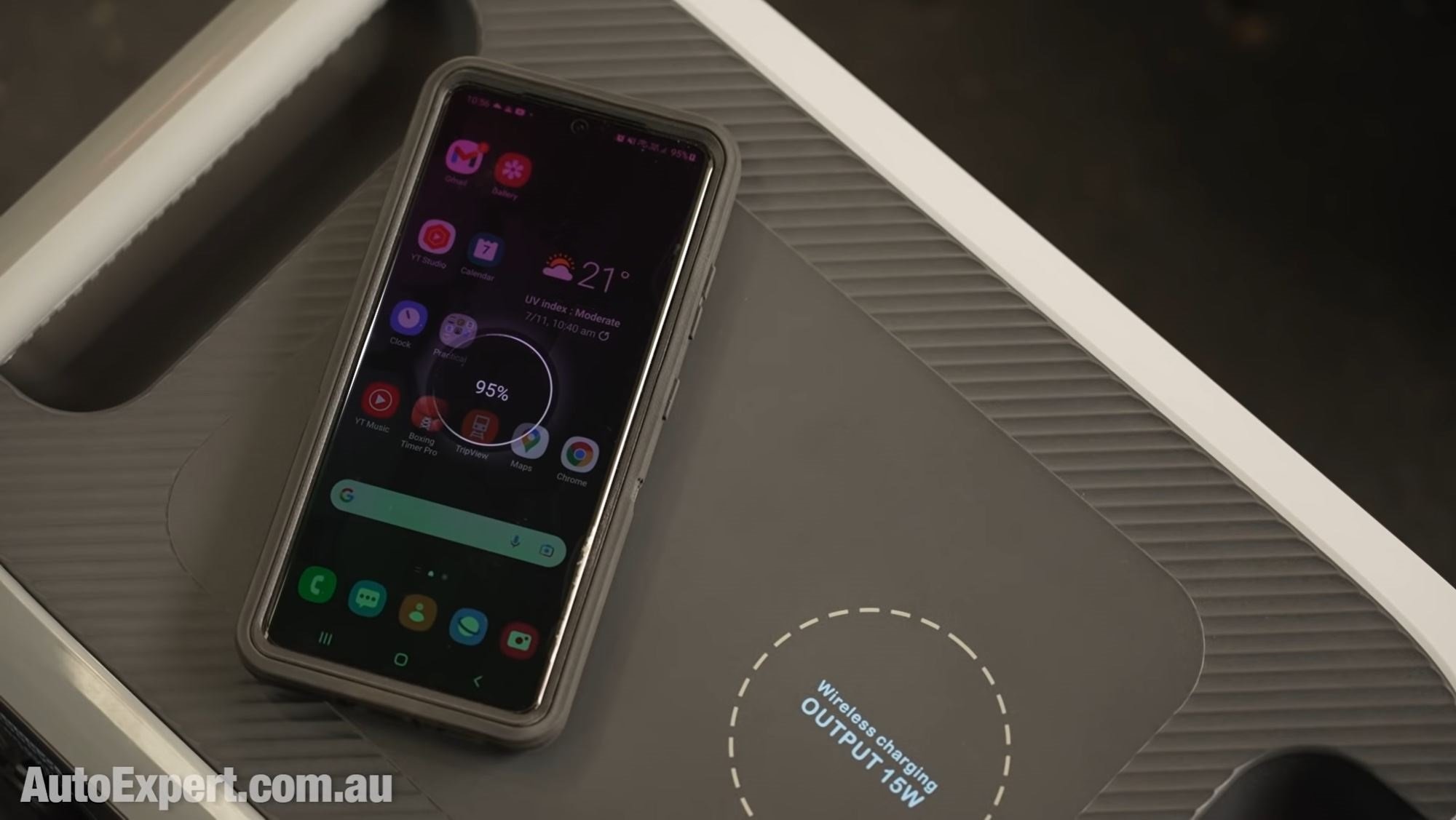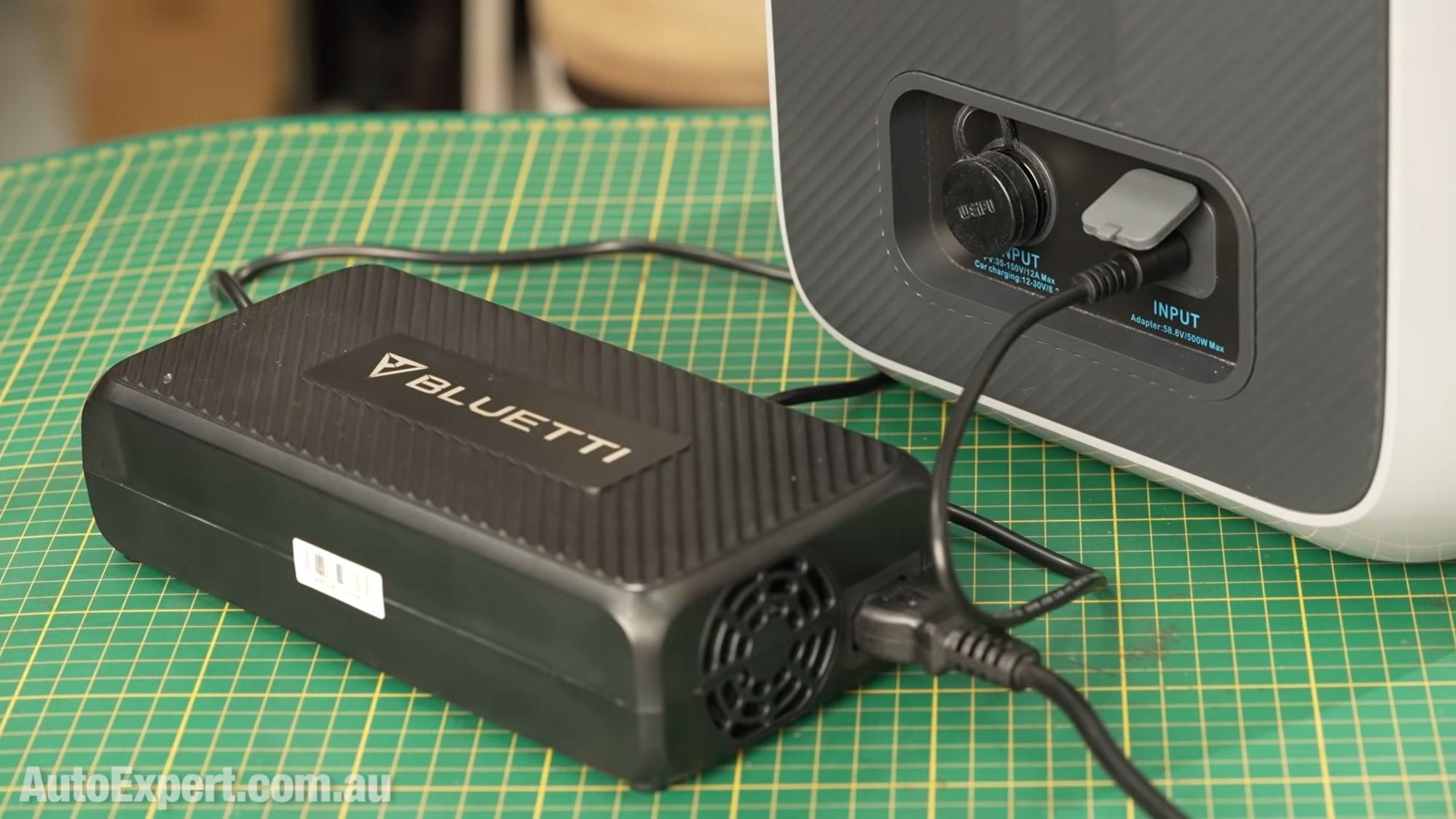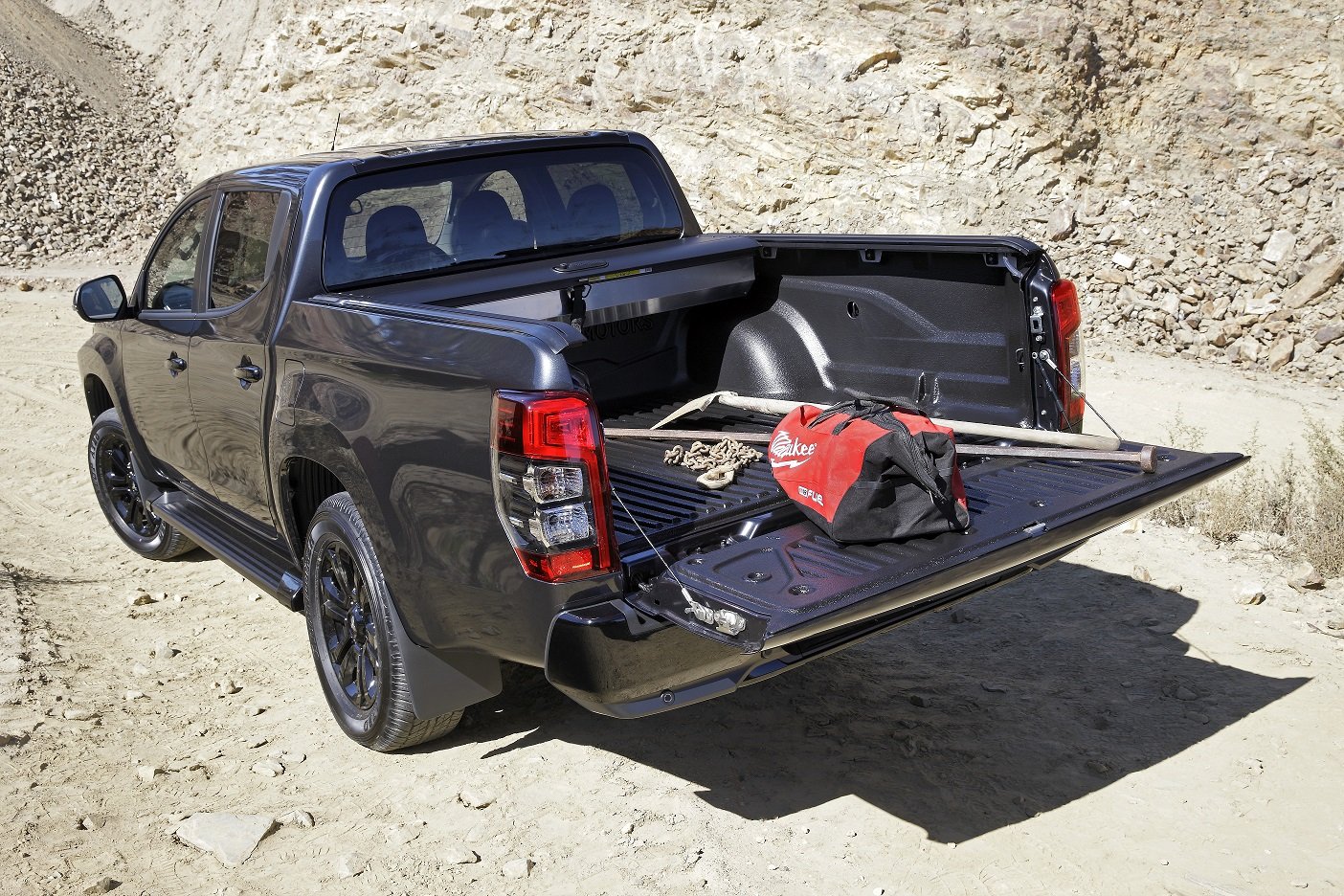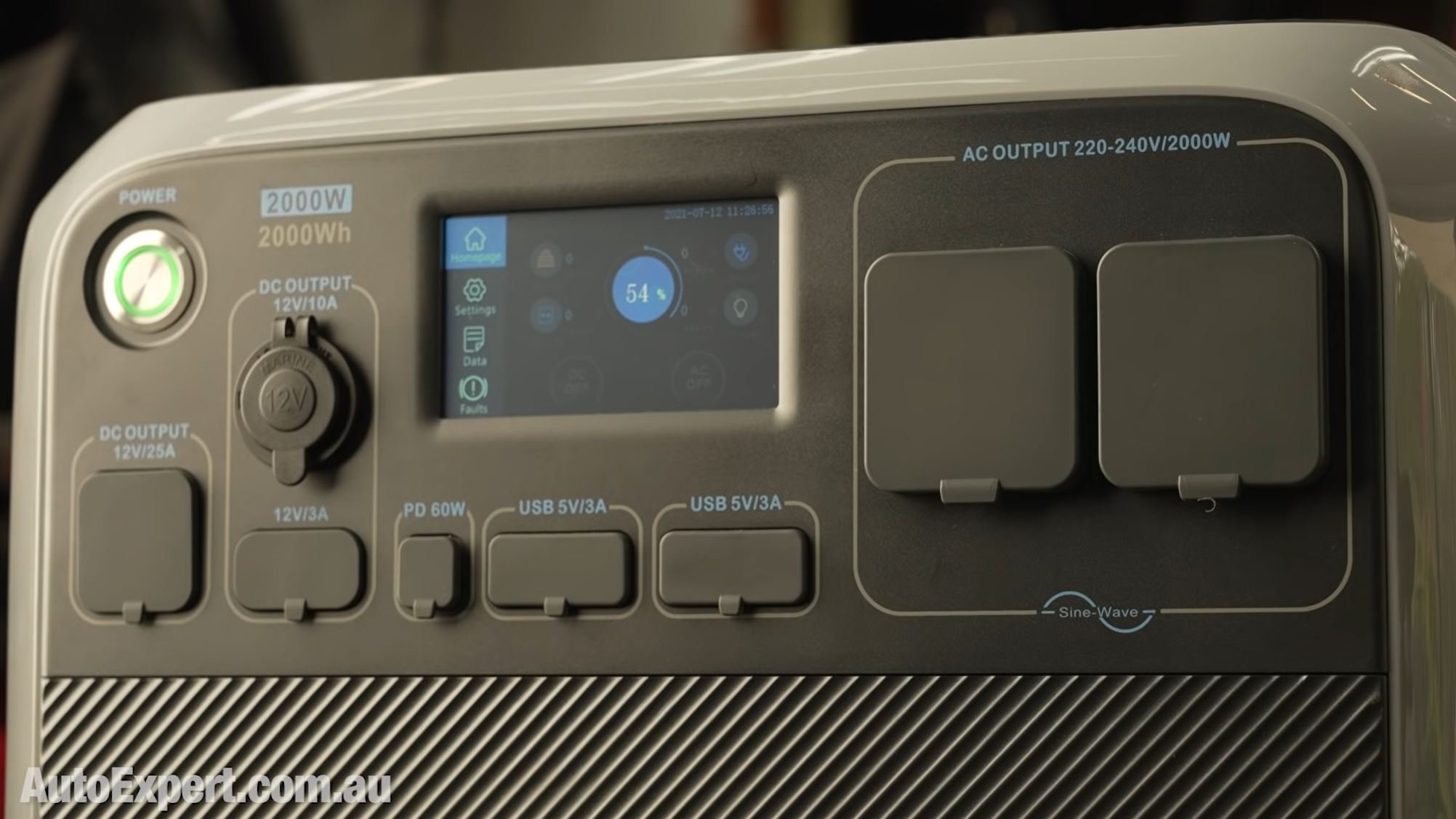HONEST REVIEW: Bluetti AC200P - Ultimate Portable Battery Power Bank?
Tradies, off-roaders, outdoor enthusiasts, or tech fiends: here's what I think of the Bluetti AC200P - a 2kWh 240V/12V & USB remote power station … and/or at-home emergency power supply...
This is the Bluetti AC200P. It’s quite a mouthful, but you can think of it as the ultimate lithium-ion battery power bank. If you use electricity off the grid, in AC or DC, either 240 or 12-volt, perhaps to recharge power tool batteries, provide mobile lighting, a TV or laptop computer, portable refrigeration - this unit provides that. It’ll do all of that simultaneously, within its operational limits, too.
Fun fact: The RAV4 Hybrid - not the plug-in one - just the poverty Hybrid; by comparison: the Bluetti AC200P has a 25 per cent bigger battery than the RAV4 Hybrid. It’s 1.6 kilowatt-hours for the RAV and an impressive 2.0 kilowatt-hours for this baby.
Understanding Batteries: Watt-hours Vs Amp-hours, power, energy and more >>
Disclaimer: Bluetti reached out to me just before Sydney’s lockdown in the second-half of 2021, asking if I would like to review the AC200P. I said ‘OK’, they sent it out, and we all went into virtual house arrest. I’ve been playing with it here in the Fat Cave, endlessly, for several months.
If you want one, there’s an Amazon affiliate Bluetti link here >>, which will give me a small commission that ultimately helps the channel. That’s the limit of my financial connection with this product.
Frankly, I don’t know if Bluetti wants its big battery back, but no money changed hands, and they’re not getting any say in this review. This is my honestly held view, and it’s unencumbered by Bluetti. Essentially, this is: portable power bank versus engineer. Honest review.
No money changed hands, and Bluetti gets no say in this review.
I generally don’t bother reviewing a product that is 100 percent low grade junk’ I just send it back, or bin it. Who can be bothered reviewing a bad product when the conclusion is: ‘Don’t buy’? So, the fact that I am bothering here should tell you something.
In a nutshell, this thing is super-versatile on charging and discharging - meaning you can feed electricity into it in numerous ways (including: plugging it into the mains at home, or if you’re on the move - 12-volts from the vehicle, or you can use solar panels).
You can extract electricity in several different ways, too: 12-volt DC, plus 220-240-volt AC (it’s got an inbuilt pure sine wave AC inverter on board), so that’s just like the wall outlet at home, more or less, but capped at 2000 watts, plus there’s USB-C and USB-A outlets, and two wireless inductive charge pads.
Cost:
Now, the Bluetti is not cheap - it’s currently listed at just under $2600, which is $700 off the RRP. Essentially, it’s expensive because batteries are expensive, and it’s clearly not just a battery in a box. There’s a lot of electronic architecture in there as well - the inverter, charger, thermal management.
Bottom line is the AC200P is not a trivial purchase - and it may not be the ideal remote power solution for you. So, in assessing it, what I did was: I tried to think of a few applications where it does hit the sweet spot.
My AutoExpert AFFORDABLE ROADSIDE ASSISTANCE PACKAGE
If you’re sick of paying through the neck for roadside assistance I’ve teamed up with 24/7 to offer AutoExpert readers nationwide roadside assistance from just $69 annually, plus there’s NO JOINING FEE
Full details here >>
PORTABLE POWER
There’s an obvious off-road adventuring application, where fitting a dual-battery setup really might not suit you. Because there is a lot of stuffing about with that - mixing and matching components, etc. You also need to fit a system like that and find hard physical mounting space.
Say you’re planning on selling your 4X4 next year, and you finally want to do a big trip before kissing it goodbye: Dumping $4000 into a hard-wired setup that drives off with the vehicle might seem like a poor use of the cash.
Or, say you’re a tradie who goes off-road recreationally, only occasionally, and who doesn’t really need a second battery plus inverter and isolator, etc., for work. This is portable. It’s in the vehicle when you need it, and out when you don’t. In for camping; out for work, kinda thing. Frees up space.
Portability might matter to you - you might have two or three 4X4s, for example. Hard-wiring a dual-battery setup into each of those is going to be a lot more expensive than moving one of these Bluetti units from vehicle to vehicle. Simple choice.
I just priced up a Redarc 1500-watt lithium-ion battery and inverter bundle. It’s $4190, off the Redarc website, today, and I’m not shit-canning them. I have no doubt it’s a quality product. But you need to install it, plus figure out the charging solutions, isolator, fuses, etc.
As I see it, compared with the Redarc kit, the Bluetti AC200P gives you 33 per cent more electrical grunt, in a box, with portability, at a pricepoint more than 25 per cent lower - before factoring in installation, and other components, etc.
In that context, it’s a significant saving.
A petrol generator is of course substantially cheaper and also portable - but you do need to carry petrol, and petrol is a safety hazard - especially in the Outback where temperatures are high, humidity is low and where you could be untold hours from emergency medical support. (And it’s another fuel container to carry - because the vehicle is probably diesel.)
Aside from the typical off-roading, camping and outback adventuring applications, there’s some other left-of-field applications for the Bluetti, too.
You might need a tonne of power in a remote location, and you might need it to be quiet, meaning no generator. Perhaps you’re shooting a documentary. The AC200P is perfect for that. You can run an Aputure 300D or even a Forza 500 (and turn night into day) for several hours, in comparative silence and keep all the phones and V-mount batteries charged. Especially if you set up some solar panels to deposit electrons at the same time as your equipment is withdrawing them.
Maximum solar input (for recharging) is 700 watts - so, hypothetically, you could pump in 700 while extracting 500 watts for the big Forza and 500 watts for sundry other charging duties, and ultimately run the unit for six hours straight before the battery taps out. Or a lot longer if you power the light down between takes.
You can extract power from this thing via a total of 13 different outlets. Simultaneously. And, of course, it could come in pretty handy if there’s a blackout on the home front. The grid goes down (big bushfire or something; summer in Australia - too much fun).
You might want to keep the phones on for updates, and run some emergency lighting and maybe even the TV, for monitoring extreme weather emergencies.
Black Saturday Bushfires, 2009. Image: Museum Victoria
Having used the Bluetti here in the Fat Cave for several months now, it’s dead simple to operate. It’s got a touch screen. You charge it up by plugging it in. It works when you turn it one, every time - at least, it has for me. If you can operate a smart phone, you can drive this.
It’s pretty compact, too: The AC200P will fit in a box 450 x 400 x 300 (internal dimensions). Frankly, however, you’re not gunna run that far uphill carrying an AC200P - it’s pretty hefty, at 27.5 kilos. Not nearly as hefty as the same grunt in lead-acid batteries, but it’s hardly ‘butterflies’.
Just want to be really clear about the AC load: This unit is rated to 2000 watts. It’s going to protect itself by tripping out immediately, if you attempt to extract 2500. You can exceed 2000 watts - briefly. If the power draw at some particular time is above 2000 watts but below 2500, you get two minutes of grace before the overload protection kicks in.
You’re gonna have to be careful of big, powerful devices that really surge on startup. Compressors and welders are out, essentially, and be realistic - anything that comes with a 15-amp plug is essentially Goliath vs David, here, only David won’t win.
But let’s say you’ve got a bunch of concrete to mix for a few fence posts or some footings in the bush, somewhere well outside the range of the nearest extension cord. Using this unit to run a cheapie half-horsepower electric mixer (that’s 375 watts, more or less) sounds a lot better to me than mixing it all by hand. (Pro tip: a petrol concrete mixer is nearly as expensive as one of these Bluetti power packs.)
Incidentally, the supplied AC recharger is rated at 500 watts - so it’s a pretty serious unit. Big fan inside. That means four-ish hours from empty in the battery, to totally full and ready to rip, out on location again.
The one thing I really wish the Bluetti had, which it does not, is an inbuilt jump starter for the vehicle - because it certainly packs enough punch to get that job done. But you can obviously recharge a flat cranking battery using the 240-out and a conventional battery charger. This will take some time.
Alternatively, you can charge a jump start pack using the Bluetti - but battery charger, jump start pack - they’re just another couple of things to carry. And the list is already endless.
The conclusion here is: The Bluetti AC200P is a compact, turnkey solution for anyone needing quite a lot of electrical grunt out there, on location. It’s versatile and simple. The negatives are: It’s not especially cheap (but, to be fair) it is a high-quality, good value remote power solution, albeit at a relatively significant pricepoint. Second negative is the lack of jump-start capability. That would have been easy to include - one more output and plug-in jump start cables.
This unit is clearly not for everyone, but if it does solve your many and varied remote electrical power needs, it’s a pretty sweet fit.


























The Hyundai Palisade is a big, comfortable holiday machine for growing families and offers excellent value, generous 8-seat SUV space, and practicality on par with LandCruiser - but it’s $30K more affordable.